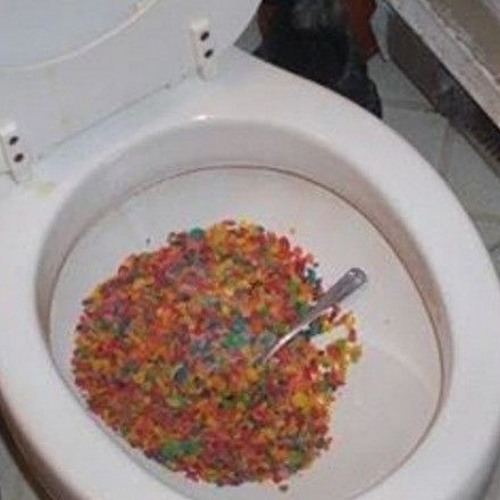Here below you can find lots of excellent details pertaining to Flushing Food Down the Toilet?.

Intro
Lots of people are usually confronted with the problem of what to do with food waste, particularly when it pertains to leftovers or scraps. One common question that develops is whether it's okay to purge food down the toilet. In this write-up, we'll explore the reasons why individuals could consider flushing food, the repercussions of doing so, and alternate methods for proper disposal.
Reasons why people might think about flushing food
Absence of awareness
Some people might not recognize the potential injury triggered by flushing food down the toilet. They might erroneously believe that it's a harmless practice.
Ease
Purging food down the commode may seem like a quick and easy service to taking care of undesirable scraps, specifically when there's no nearby trash can available.
Negligence
In some cases, people may just select to flush food out of large idleness, without considering the effects of their actions.
Repercussions of flushing food down the bathroom
Ecological influence
Food waste that ends up in rivers can contribute to air pollution and damage marine ecosystems. In addition, the water utilized to flush food can stress water resources.
Pipes problems
Purging food can bring about clogged pipes and drains, causing pricey plumbing repair work and hassles.
Kinds of food that should not be purged
Coarse foods
Foods with coarse appearances such as celery or corn husks can get entangled in pipelines and create obstructions.
Starchy foods
Starchy foods like pasta and rice can absorb water and swell, resulting in blockages in pipes.
Oils and fats
Greasy foods like bacon or cooking oils must never ever be flushed down the bathroom as they can strengthen and cause obstructions.
Appropriate disposal approaches for food waste
Using a garbage disposal
For homes geared up with waste disposal unit, food scraps can be ground up and flushed through the pipes system. Nevertheless, not all foods are suitable for disposal in this way.
Recycling
Specific food packaging products can be recycled, minimizing waste and lessening environmental impact.
Composting
Composting is an environment-friendly means to dispose of food waste. Organic materials can be composted and used to improve soil for horticulture.
The significance of correct waste administration
Decreasing environmental damage
Appropriate waste monitoring methods, such as composting and recycling, aid reduce contamination and maintain natural deposits for future generations.
Safeguarding plumbing systems
By staying clear of the practice of flushing food down the toilet, home owners can protect against expensive plumbing repairs and preserve the integrity of their pipes systems.
Conclusion
Finally, while it may be alluring to flush food down the commode for ease, it is essential to recognize the prospective repercussions of this activity. By embracing proper waste monitoring methods and disposing of food waste properly, people can add to much healthier pipes systems and a cleaner setting for all.
FLUSH FOOD DOWN THE TOILET?
FLUSHING FOOD CAN CAUSE BLOCKED DRAINS IN YOUR HOME
All of the plumbing fixtures in your home are connected to the same sewer pipe outside of your home. This outdoor sewer pipe is responsible for transporting all the wastewater from your home to the Council sewer mains. Even small pieces of food that go down the kitchen sink can cause problems for your sewer. It should therefore be obvious that flushing larger bits of food, such as meat, risks a clog in either the toilet itself or the sewer pipes. Flushing greasy food is even more problematic because oil coagulates when it cools, coating the interior lining of your pipes.
THE TOILET IS NOT A BIN
Food isn’t the only thing that people shouldn’t be flushing down the toilet. People use the toilet to dispose of all kinds of things such as tampons, makeup wipes, dental floss, kitty litter and even underwear. Water goes to great lengths to educate residents about the high costs and stress placed on wastewater treatment systems simply from people flushing the wrong stuff down the toilet. It costs taxpayers millions of dollars each year, and homeowners thousands in blocked drain repairs.
FLUSHING FOOD IS A WASTE OF WATER
Flushing food is a waste of our most precious resource - water. In June this year Level 1 water restrictions were introduced to protect water supply from drought conditions. Much of New South Wales continues to be affected by prolonged drought with recent figures revealing up to 97 per cent of the state remains in drought. Depending on whether you have a single or dual flush toilet, every single flush uses between five and 11 litres of water. In the current climate this is a huge amount of water to be wasting on flushing food that should be placed in the bin (or better yet, the compost).
https://www.jabplumbingsolutions.com.au/blog/can-you-flush-food-down-the-toilet

I have been very serious about What Can Happen If You Flush Food Down the Toilet? and I'm hoping you appreciated my entry. Enjoyed reading our write up? Please quickly share it. Let somebody else check it out. I am grateful for your time. Kindly visit our website back soon.
Book A Service Call